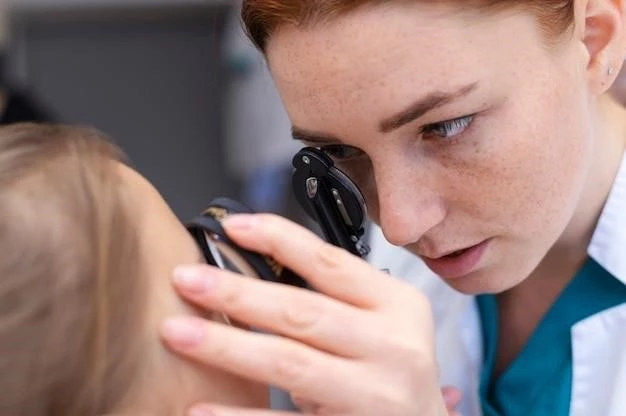Macular Dystrophy, Vitelliform
Macular Dystrophy, Vitelliform is a genetic disease affecting the retina. It involves yellowish deposits on the macula, leading to vision loss. This article will delve into understanding the disease, genetic factors, treatments like vision therapy, low vision aids, and clinical trials.
Introduction to Macular Dystrophy, Vitelliform
Macular Dystrophy, Vitelliform is a rare inherited eye disorder that impacts the macula, causing yellowish deposits known as vitelliform lesions. These deposits can affect central vision, leading to vision loss over time. Symptoms may include wavy or blurred vision, and difficulty recognizing faces or reading.
Diagnosing this condition involves a comprehensive eye exam, genetic testing, and imaging tests like fluorescein angiography. Genetic counseling can help individuals understand the hereditary implications. While there is no cure for Macular Dystrophy, Vitelliform, management strategies focus on slowing disease progression and preserving existing vision.
Research into this disease is ongoing, exploring potential treatment options such as gene therapy, stem cell therapy, and pharmacological interventions. Additionally, participation in clinical trials can provide access to cutting-edge therapies. Vision therapy and low vision aids can also assist individuals in maximizing their remaining vision and maintaining independence in daily activities despite vision loss.
Understanding the Disease
Macular Dystrophy, Vitelliform primarily affects the macula, a part of the retina responsible for central vision. The yellowish deposits that characterize the disease can lead to distortion and reduced clarity in central vision. As the condition progresses, individuals may experience difficulties with activities like reading and driving.
This inherited condition is linked to specific genetic mutations, with variations in the BEST1 gene being associated with Vitelliform Macular Dystrophy. The disease tends to manifest early in life and can vary in severity among affected individuals. Risk factors include a family history of inherited retinal diseases.
Regular eye examinations are essential for monitoring disease progression and implementing appropriate management strategies. Early detection through genetic testing enables proactive treatment planning and personalized care. Understanding the genetics behind Macular Dystrophy, Vitelliform is crucial for both patients and healthcare providers in addressing the unique challenges posed by this condition.
Genetic Factors
Macular Dystrophy, Vitelliform is primarily driven by genetic factors, specifically mutations in the BEST1 gene. This gene provides instructions for making a protein that plays a crucial role in the function of retinal cells. Variations in the BEST1 gene can disrupt the normal structure and function of the macula, leading to the formation of yellowish deposits.
As an inherited condition, individuals with a family history of Macular Dystrophy, Vitelliform are at an increased risk of developing the disease. Genetic testing is instrumental in identifying these mutations and facilitating early diagnosis. Understanding the genetic underpinnings of the condition is essential for appropriate genetic counseling and informed decision-making regarding treatment options and disease management.
Research into the genetic mechanisms involved in Macular Dystrophy, Vitelliform continues to advance our knowledge of the disease and may pave the way for targeted therapies in the future. By unraveling the genetic complexities of this condition, scientists aim to develop more effective interventions and personalized approaches to care for individuals affected by this inherited retinal disorder.
Treatment and Management
While there is currently no cure for Macular Dystrophy, Vitelliform, various treatment options and management strategies exist to help preserve vision and improve quality of life. Vision therapy, including visual exercises and rehabilitation techniques, can enhance visual function and adaptability.
Low vision aids, such as magnifiers, telescopic lenses, and electronic devices, can assist individuals with macular dystrophy in performing daily tasks more comfortably. These aids optimize the remaining vision and enable greater independence. Furthermore, occupational therapy may provide valuable support in adapting living spaces and routines to accommodate vision loss.
Participation in clinical trials can offer access to novel treatments under investigation, including gene therapy and stem cell therapy. Close monitoring by healthcare providers is essential to track disease progression and adjust treatment plans accordingly. Collaborative efforts between patients, caregivers, ophthalmologists, and genetic counselors are crucial in managing Macular Dystrophy, Vitelliform effectively.
Disease Progression and Prognosis
The progression of Macular Dystrophy, Vitelliform varies among individuals, with some experiencing a gradual decline in vision over time while others may have a more stable course. As the yellowish deposits accumulate on the macula, central vision can be significantly impacted, leading to challenges with tasks that require sharp, detailed sight.
Prognosis for individuals with this inherited retinal disease depends on factors such as the specific genetic mutations involved, the age of onset, and the rate of disease advancement. Regular monitoring by eye care professionals is crucial to assess changes in vision and implement appropriate interventions to slow disease progression.
While vision loss associated with Macular Dystrophy, Vitelliform can impact daily activities, early diagnosis, and proactive management can help individuals maintain functional vision for as long as possible. Research into new treatment modalities and ongoing clinical trials offer hope for improved outcomes and a better prognosis for those affected by this genetic condition.
Conclusion
In conclusion, Macular Dystrophy, Vitelliform is a complex genetic eye disorder characterized by yellowish deposits on the macula, leading to vision loss and impacting central vision. Understanding the genetic underpinnings of the disease is key to diagnosis, prognosis, and personalized treatment approaches.
While there is currently no cure for this inherited retinal condition, ongoing research and advancements in genetic testing offer hope for innovative therapeutic strategies. By focusing on early detection, proactive management, and the utilization of vision therapy and low vision aids, individuals with Macular Dystrophy, Vitelliform can optimize their remaining vision and maintain their quality of life.

Collaboration between patients, healthcare providers, genetic counselors, and researchers is essential in the holistic management of this disease. By staying informed about the latest developments in treatment options and participating in clinical trials, individuals affected by Macular Dystrophy, Vitelliform can contribute to the advancement of knowledge and potential breakthroughs in the field of inherited retinal disorders.
